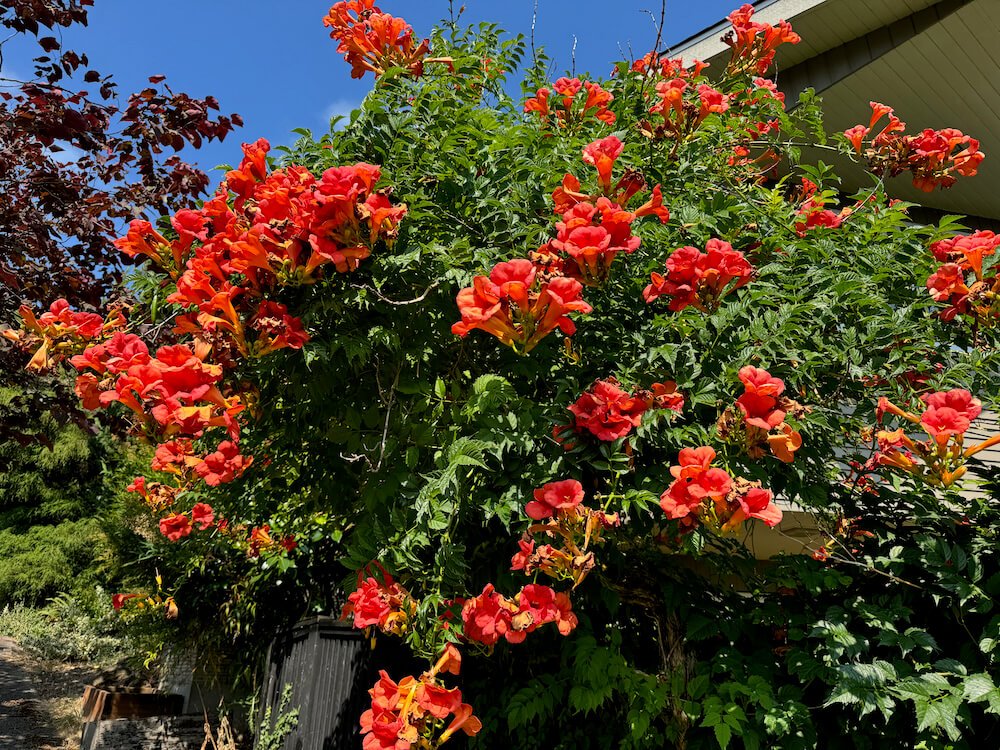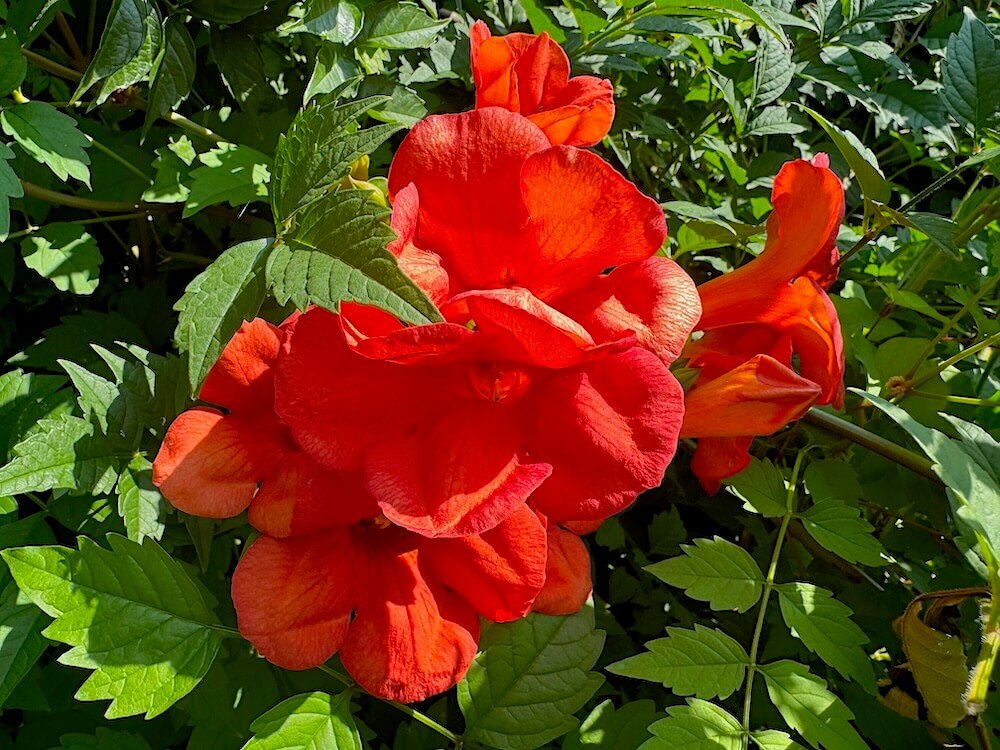DESCRIPTION
Campsis radicans, commonly known as trumpet vine, is a vigorous climbing plant that produces large, trumpet-shaped flowers in bold shades of orange to red. These striking blooms appear in clusters from mid-summer to early fall, attracting hummingbirds and other pollinators. The vibrant flowers stand out against the lush green foliage, adding a tropical feel to the landscape.
Native to the southeastern United States, Campsis radicans has been cultivated for its ornamental beauty and ability to cover large structures such as walls, arbors, and fences. Its ability to thrive in various conditions and its extended blooming period make it a popular choice for gardeners seeking a bold, flowering vine.
DESCRIPTION
Campsis radicans, commonly known as trumpet vine, is a vigorous climbing plant that produces large, trumpet-shaped flowers in bold shades of orange to red. These striking blooms appear in clusters from mid-summer to early fall, attracting hummingbirds and other pollinators. The vibrant flowers stand out against the lush green foliage, adding a tropical feel to the landscape.
Native to the southeastern United States, Campsis radicans has been cultivated for its ornamental beauty and ability to cover large structures such as walls, arbors, and fences. Its ability to thrive in various conditions and its extended blooming period make it a popular choice for gardeners seeking a bold, flowering vine.



